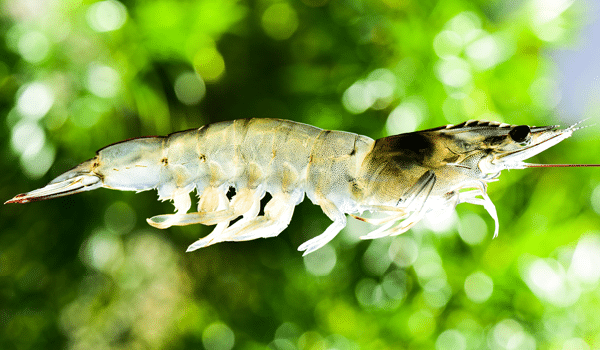Penaeid shrimps are one of the most farmed fish in the world and are considered as high value species on the market. These crustaceans are carnivorous and can live in a large range of water salinity, from freshwater to seawater depending on the specie (FAO, 2022).
Furthermore, Penaeid shrimps are warm water species (T ~20-30°C) and reach commercial size (~15-45g) after 3 to 6 months in average. FCR can vary from 1.2 to 3 (FAO, 2022). Lastly, the rearing systems used to produce these target species is another parameter to be taken into consideration, as it can be a barrier to the use of certain raw materials.
Today shrimp are mostly farmed in pond and RAS (recirculated aquaculture system) where nitrogen (N) and phosphorus (P) discharges can be harmful and cannot be fully treated if the filtration system or water change are not sufficiently efficient. Therefore, ingredients containing less P and N or more digestible P and N may be useful to incorporate into diets for these types of farming systems, to help limit water eutrophication.
Concerning feeding practices, these species are more focused on proteins and lipids, the more energetic metabolic substrates (23.5 & 39KJ/g) (Jobling, 2011). On the other hand, shrimps undergo several molting periods cycles during the rearing, which can result in significant losses of certain minerals. It is therefore important to consider this factor in order to propose a feed that integrates the right quantities of minerals (Phosphorus, Magnesium, Calcium, etc.) to offset these losses.
Finally, shrimp lack a “true stomach” and acid digestion (NRC, 2011), making the assimilation of poorly digestible ingredients difficult. Incorporating highly water soluble phosphorus into the formulation will compensate for this deficiency and facilitate intestinal absorption.
